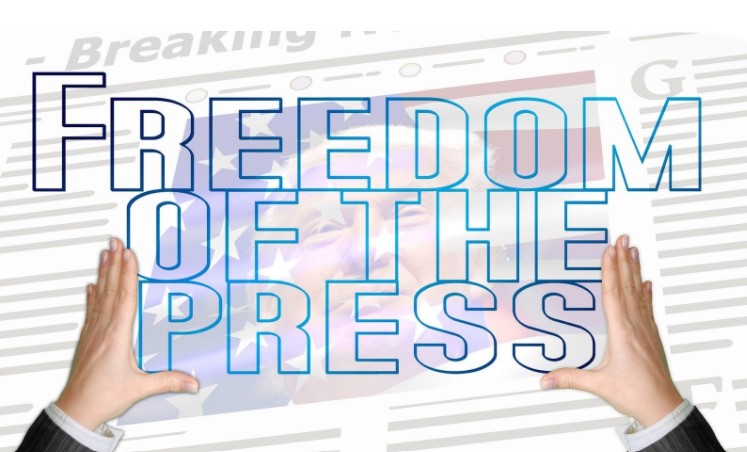
FIR against UP Journalist Pawan Kumar Jaiswal for Exposing irregularities in mid-day meal blot on Indian democracy- Firstpost
Manipuri journalist Kishore Chandra Wangkhem languishes in Jail over Facebook Posts- Wion News
Gujarat Journalist Dharavi Patel Booked for Sedition Remanded in Police Custody – Deccan Herald
These are only a few from the long list of coordinated attacks on dissent and dissenters by the state and its powerful agencies in India. This led to the world’s largest democracy being ranked 142nd out of 180 countries in the World Press Freedom Index and thus ringing a bell for the country that prides itself on its press being the fourth pillar of democracy.

The battle between dissenters and state is not a new phenomenon in independent India; it goes back to the time of independence itself. However, the defining period of Indian censorship will always remain the time of emergency of 1975. With freedom of speech being suspended as a fundamental right, newspapers were banned, journalists were jailed, and creative arts were muzzled by the government of Indira Gandhi. This was one of the most brazen attacks on press freedom and civil liberties putting the basic foundation of the Indian constitution at risk. Drawing a comparison between the times of emergency and the current scenario, Tarunabh Khaitan, vice-dean of law at Oxford University says, “What is unusual about our current political moment is that, unlike a formal emergency that undermines rights openly, all our rights are supposed to still be functional. There is no formal suspension of rights. But their corrosion in practice has become overwhelming. We are living in an extra-legal, informal, emergency. During a formal emergency, a citizen can perhaps hope that things will go back to normal once it is lifted”.

Media in India has always been victim to the self-censorship model as the entire model of media funding and revenue generation is utterly flawed. With powerful corporations having vested interests and political links, the integrity and credibility of journalism have often been compromised. After 2014, there has been an explosion of media creation and media content disseminated to the people within seconds. The current scenario is increasingly mediated not just through conventional media— TV, print, and radio in the hands of a few- but through the power of digital online media that makes it accessible to all. But with the changing paradigms, the tools of censorship have only gone stronger thereby making the jobs of independent journalists even tougher.
The press freedom of the country, the cornerstone of Indian democracy, has been put to continuous threats with the use of archaic and draconic laws such as sedition law, defamation law, UAPA etc. The last seven years, specifically with the NDA coming to power have seen a rise in attacks on dissenting voices and critics of the present government. Cases of sedition have been filed against more than 405 Indians for criticising politicians and governments over the last decade after 2014 according to the data compiled by the online publication Article 14

It is believed that with every atrocity on civil liberty, India is becoming even more unsafe for journalists. In 2020, sixty-seven journalists were arrested and nearly 200 physically attacked as per the study conducted by Geeta Seshu for the Free Speech Collective.

Not only journalists but authors, academicians and even students have suffered at the hands of repressive colonial laws like sedition, defamation etc.

With TV and print media models majorly dependent on advertisements by the government, the digital medium offers an alternative of doing independent and fearless journalism without the fear of censorship. But with the central government bringing the new Intermediary Guidelines and Digital Media Ethics Code, the independence of digital platforms also seems to be at risk. The Editors Guild of India has issued a statement criticizing these new rules, according to them, these will fundamentally alter how publishers of news operate over the internet and have the potential to seriously undermine media freedom in India.
The power of the press is undoubtedly immense; it can make and break empires and governments. Being fully aware of this fact and knowing India’s long history of censorship, the ruling government is leaving no stone unturned to take away these free platforms and turn them into their mouthpieces, as what we are witnessing on most of the prime-time television news channels these days. But where will it lead the liberal legacy bestowed upon us by our forefathers and foremothers? This remains a worrying question.


What’s up, just wanted to mention, I loved this post.
It was helpful. Keep on posting!
Nice post. I was checking constantly this blog and
I’m impressed! Extremely helpful info specially the last part 🙂 I
care for such info much. I was seeking this certain info for a very long time.
Thank you and good luck.